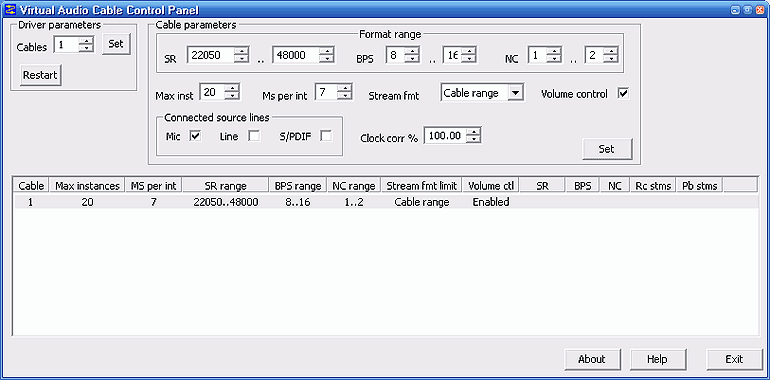


We further want to connect more than ONE sound source to the recorder. In our case, we want it to connect the output of a sound producer on the laptop to the input of some recorder. We can’t completely avoid all program theory here, but the reason it’s called “Virtual Audio Cable” is because it acts like what we used to call a “patch cord.” It connects the output of something to the input of something else. The image below shows what is added to the Vista Start menu after VAC installation.

The final message is a small dialog that says, “Installation completed successfully.” Setting Up VAC The third image below is a warning from Vista that it can’t verify the “publisher of this driver software.” Microsoft still makes it impossible for private, single developers to get certificates, so you can click “Install anyway” and continue. It also warns that previous versions, if any, should be uninstalled before continuing. On the second setup screen, there is a check-box beside “I am an advanced user.” You should only check this if a previous installation failed on your laptop. I found no undesirable stipulations in the license. Of interest to us are “vac.chm” which is the compiled help file and the two executable files - setup.exe and setup64.exe. There are several files and a couple of folders present when the distribution file is unzipped. The version we tested was 4.09 32-bit, and the ThinkPad is running Vista Home Premium. You can read the entire page if you wish, or you can scroll down and click the link to download the 32-bit or 64-bit version.

We’ll talk about what we need to set up VAC on a laptop that lacks the stereo mix feature and how to use it to record one or more sound sources, including “what u hear” and microphone mix, on a notebook. Here we’re taking a more direct approach. If you like to dig deep into the plumbing, there’s enough theory, principles, background, associated content, and practices in the Help Guide to satisfy and bemuse. Virtual Audio Cable (VAC) has a reputation for being a tough program to learn and use. I’ve read complaints ranging from disappointment over no longer being able to do karaoke with a newly purchased laptop, annoyance at not being able to do advertising voice-overs, to some real ire at not being able to perform audio mixing and recording by a church music director. I think the manufacturers really had no idea how much they’d aggravate a whole swath of their users with this policy. On my particular ThinkPad, it can be enabled somewhat by a registry hack, but you have to disable the onboard microphone in order to use stereo mix, so it’s not a great fix. A lot of discussion can be found online about it. Recently some manufacturers of notebook computers, particularly those produced or based in China, have been shipping laptops with the stereo mix feature disabled in firmware.


 0 kommentar(er)
0 kommentar(er)
